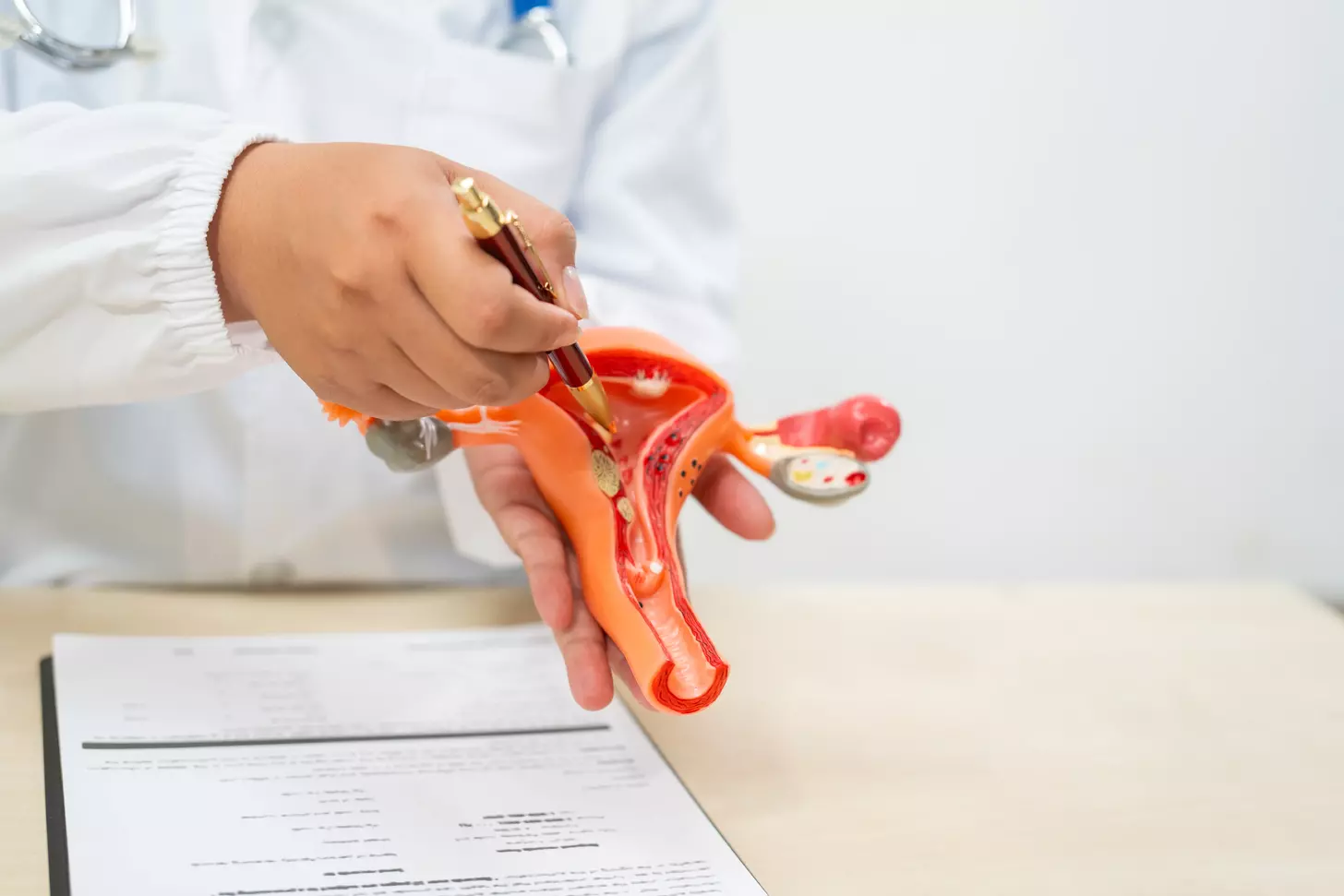Last Updated on November 26, 2025 by Bilal Hasdemir

How long does a spinal epidural last for back pain? Get the key facts on the duration of relief and what factors can influence it.
At LivHospital, we know how complex back pain can be. Spinal epidural injections are a key treatment for back pain. They can offer relief for weeks to 12 months.
The time pain relief lasts can vary a lot. It depends on the type of back problem, the patient, and the medication used. We understand that everyone’s back pain journey is different. Our team is here to give you personalized care.
Epidural injections are important for managing pain. They are more needed as people age and musculoskeletal disorders become more common. We aim to provide top-notch healthcare with full support and guidance.
Key Takeaways
- Spinal epidural injections can provide pain relief for several weeks to 12 months.
- The duration of pain relief varies depending on individual patient characteristics and the type of back problem.
- The medication used in epidural injections plays a significant role in determining the length of pain relief.
- Epidural injections are a common treatment for managing back pain.
- Liv Hospital offers expert, patient-centred care for back pain management.
Understanding Spinal Epidural Injections for Back Pain

Spinal epidural injections are key for those with back pain. They involve putting medication around the spinal cord. This method targets pain effectively.
What is a Spinal Epidural Injection?
A spinal epidural injection is a small procedure. Steroids or anesthetics are injected into the epidural space. This space is around the spinal cord and nerves.
The goal is to reduce inflammation and pain. Doctors use X-rays to guide the injection for accuracy.
Common Conditions Treated with Epidural Injections
Epidural injections help with many back pain issues. These include:
- Herniated discs
- Spinal stenosis
- Degenerative disc disease
- Spondylolisthesis
These problems cause nerve irritation and pain. Epidural injections can greatly reduce this pain by lowering inflammation.
The Epidural Space and Injection Mechanism
The epidural space is vital for pain relief. Injecting medication here can directly impact pain nerves. It works by reducing inflammation and pain signals.
Precision is key in these injections. The medication must be placed near the pain nerves for the best results.
The Duration: How Long Does a Spinal Epidural Last?

Knowing how long a spinal epidural lasts is key to managing back pain. These injections are a common treatment for back pain. The relief they provide can vary a lot from person to person.
Average Duration of Pain Relief
Spinal epidural injections can give pain relief for weeks to months. Studies have shown that many people feel better for up to 3 months. Some even see benefits for 6 months or more.
Research-Based Evidence on Duration
Research has given us important insights into epidural steroid injections. A study in the Journal of Pain Research found relief lasted about 12 weeks. Another study in the Spine Journal said relief lasted 4 to 6 months on average.
| Study | Median Duration of Relief | Average Duration Range |
| Journal of Pain Research | 12 weeks | 8-16 weeks |
| The Spine Journal | 4-6 months | 3-9 months |
Variations in Individual Response
How people react to spinal epidural injections can differ a lot. This depends on the condition being treated and the person’s health. For example, those with chronic conditions might feel relief longer than those with acute injuries.
Every person’s response is unique. Things like age, health, and how active you are can affect how long relief lasts. Healthcare providers use this knowledge to make treatments fit each person’s needs better.
Timeline of Epidural Injection Effects
Knowing how long epidural injections last is key to managing pain. After getting an epidural, patients go through different stages. These stages range from right after the shot to long-term relief.
Immediate Post-Injection Period (First 24 Hours)
Right after an epidural, patients might feel numbness or discomfort where the shot was given. A study says, “The immediate effects of epidural injections are often related to the local anesthetic used, which can provide temporary relief.” This feeling usually goes away within a day. It’s important for patients to follow the care instructions after the shot to avoid side effects.
Short-Term Effects (Days 2-14)
After the first day, patients start to feel the benefits of the epidural. Days 2-14: see the anti-inflammatory medication kick in, bringing significant pain relief. A study found, “The peak effect of epidural steroid injections is usually observed within 2-3 weeks.” Patients can do more daily activities and feel less pain.
Some might feel a temporary increase in pain or discomfort, known as a “flare-up.” This is a sign the body is reacting to the treatment. But if pain doesn’t go away or gets worse, seeing a healthcare provider is important.
Long-Term Relief (Weeks to Months)
The effects of an epidural can last weeks to months, helping manage pain over time. How long it lasts varies based on several factors. Medical Expert, a pain management specialist, says, “The goal of epidural injections is to provide long-term pain relief, allowing patients to resume their normal activities and improve their quality of life.”
In summary, the effects of epidural injections unfold in three stages: immediate, short-term, and long-term. Understanding these stages helps patients manage their expectations and work towards the best pain relief.
Types of Epidural Injections and Their Duration
Epidural injections vary in how long they last, depending on the type. They target different parts of the spine. Each type is used for specific conditions and has its own effect duration.
Cervical Epidural Injections
Cervical injections are for the neck. They help with pain from herniated discs or spinal stenosis. Relief can last weeks to months, based on the condition and how well you respond.
Thoracic Epidural Injections
Thoracic injections are for the mid-back. They treat pain from disc herniations or other mid-back issues. Relief can last several weeks to months.
Lumbar Epidural Injections
Lumbar injections are for the lower back. They’re good for disc herniations or spinal stenosis. Relief can last from weeks to months.
Caudal Epidural Injections
Caudal injections are for the lower back and legs. They’re great for chronic pain. Relief can last weeks to months.
The length of pain relief from epidural injections varies. It depends on the injection type, the condition, and individual factors. Knowing about different epidural injections and their durations helps patients choose the best treatment.
- Cervical Epidural Injections: Relief for neck pain, lasting several weeks to months.
- Thoracic Epidural Injections: Target mid-back pain, with relief lasting several weeks to months.
- Lumbar Epidural Injections: Commonly used for lower back pain, with relief ranging from weeks to months.
- Caudal Epidural Injections: Used for lower back and leg pain, providing relief for weeks to months.
Medications Used in Epidurals and Their Impact on Duration
It’s important to know what medications are in epidural injections. This helps figure out how well they work and for how long. Epidural injections can have different medicines, like corticosteroids and local anesthetics. These help manage back pain.
Corticosteroids (Types and Duration Differences)
Corticosteroids are used to cut down inflammation and help with pain for a longer time. There are different kinds, like triamcinolone, betamethasone, and dexamethasone. Each one lasts a different amount of time.
| Corticosteroid Type | Duration of Action | Common Usage |
| Triamcinolone | Several weeks to months | Commonly used for chronic pain management |
| Betamethasone | Several weeks | Often used for acute inflammatory conditions |
| Dexamethasone | Shorter duration compared to others | Used in specific cases where a shorter duration is preferred |
The type of corticosteroid used can affect how long the pain relief lasts. For example, triamcinolone lasts longer. This makes it good for long-term pain.
Local Anesthetics
Local anesthetics, like lidocaine and bupivacaine, give quick pain relief. They don’t last as long as corticosteroids but are useful in some cases.
- Lidocaine: Known for its rapid onset and moderate duration of action.
- Bupivacaine: Provides a longer duration of action compared to lidocaine.
Local anesthetics are great for quick pain relief, like during tests or when you need it right away.
Combination Approaches
Using both corticosteroids and local anesthetics in epidural injections can help with both quick and long-term pain relief. This way, treatments can be tailored to each patient’s needs.
Knowing about the medicines in epidural injections and how they affect pain relief helps doctors make better choices. This leads to better treatment results.
Factors That Influence How Long Epidural Pain Relief Lasts
Knowing what affects how long epidural pain relief lasts is key. The time it takes for pain relief from epidural injections can change a lot. This is because many things can influence it.
Underlying Condition and Severity
The type of condition being treated greatly affects how long pain relief lasts. For example, treating herniated discs, spinal stenosis, or degenerative disc disease differently. The severity of the condition also matters. People with more severe spinal stenosis might not get pain relief for as long.
Patient-Specific Factors
Things like age, health, and how active you are can also play a part. Older people or those with other health issues might not get relief for as long. But healthier and more active people might enjoy relief for longer.
Injection Technique and Precision
The skill and precision of the epidural injection matter a lot. How well the needle is placed and if imaging is used can affect results. If the injection is done right, the medicine can work better and last longer.
Number of Previous Injections
Getting epidural injections before can also change how long the relief lasts. Some people might get used to the medicine and not get as much relief from later injections. But getting injections more than once can sometimes help more in the long run by letting the body heal and reducing inflammation.
In summary, many things can affect how long epidural pain relief lasts. Understanding these can help doctors give better treatments. This way, they can help people get relief for longer.
What to Expect After an Epidural Injection
We guide you through what to expect after an epidural injection. This includes common side effects and the recovery timeline. Knowing what to expect can help ease your concerns and make recovery smoother.
Common Side Effects and Their Duration
After an epidural injection, some patients may experience common side effects. These can include:
- Soreness at the injection site
- Temporary increase in pain
- Headaches
- Facial flushing
- Difficulty urinating
These side effects are usually short-lived and go away within a few days. For example, soreness at the injection site can often be managed with over-the-counter pain meds.
Recovery Timeline
The recovery timeline after an epidural injection involves rest and then gradually getting back to normal. Here’s what you can expect:
- First 24 hours: Rest and avoid strenuous activities.
- Days 2-3: Start doing light activities.
- Days 4-7: Increase activity levels, but avoid heavy lifting or bending.
- After 1 week: Most people can get back to their usual routine.
Potential Complications
While rare, possible complications can happen after an epidural injection. It’s important to know the signs and symptoms to watch for. These include:
- Severe headache or stiff neck
- Increased pain or numbness
- Fever or chills
- Redness or swelling at the injection site
If you notice any of these symptoms, contact your healthcare provider right away.
Understanding what to expect after an epidural injection helps you prepare for recovery. It also lets you make informed decisions about your care.
Maximizing the Duration of Epidural Pain Relief
To make epidural pain relief last longer, we need to try different approaches. This includes using other treatments, changing our lifestyle, and finding new ways to manage pain. By doing these things, we can get more out of our epidural injections.
Complementary Treatments
Other treatments can really help make epidural injections work better. Some examples are:
- Acupuncture
- Chiropractic care
- Massage therapy
- Physical therapy
These methods can help us move better, feel less pain, and feel better overall.
Physical Therapy and Rehabilitation Protocols
Physical therapy is very important after getting an epidural. It helps us get stronger and more flexible. This can also help prevent injuries in the future.
A good physical therapy program might include:
- Stretching exercises
- Strengthening exercises
- Posture correction
- Functional training
Lifestyle Modifications and Ergonomics
Changing our lifestyle can also help our epidural pain relief last longer. This means:
- Maintaining a healthy weight
- Improving posture
- Engaging in regular exercise
- Ergonomic adjustments at work and home
By making our environment more ergonomic, we can put less strain on our backs and joints.
Pain Management Techniques
Managing pain well is key to keeping pain relief going. Some ways to do this are:
- Meditation and mindfulness
- Breathing exercises
- Pain journaling
- Medication management
Using these methods along with epidural injections can help us control our pain better.
| Technique | Description | Benefits |
| Physical Therapy | Structured exercise program | Improved mobility, strength |
| Lifestyle Modifications | Healthy weight, posture, exercise | Reduced strain, improved well-being |
| Pain Management Techniques | Meditation, breathing, journaling | Better pain control, reduced stress |
Conclusion: Making Informed Decisions About Spinal Epidurals
Spinal epidural injections can help a lot with back pain. Knowing how long they last is key to seeing if they work. Usually, they give pain relief for weeks to months.
At Liv Hospital, we focus on personalized care and support. We help patients understand how long the pain relief lasts. This depends on the condition, the patient, and how the injection is done.
To get the most from epidural injections, try other treatments and lifestyle changes. We aim to give top-notch healthcare and support. If you’re thinking about an epidural or want to know how long it lasts, we’re here to help.
FAQ
How long does a spinal epidural injection last for back pain relief?
The time pain relief lasts from spinal epidural injections varies. It can last from weeks to 12 months.
What factors influence the duration of pain relief from epidural injections?
Several things affect how long pain relief lasts. These include the condition being treated, the patient’s age and health, and the injection’s precision. Also, the number of previous injections matters.
What are the different types of epidural injections, and how long do they last?
There are many types of epidural injections. They target different spine areas. Each offers varying pain relief times.
How do corticosteroids and local anesthetics affect the duration of epidural pain relief?
Corticosteroids help with long-term pain relief by reducing inflammation. Local anesthetics give quick but short pain relief. Mixing both can offer both immediate and long-term relief.
What can I expect after receiving an epidural injection?
After an epidural, you might feel sore at the injection site. You might also feel a temporary increase in pain. These side effects usually go away in a few days.
How can I maximize the duration of pain relief from epidural injections?
To get the most out of epidural injections, try physical therapy and rehabilitation. Making lifestyle changes and using pain management techniques can also help.
Are there any potentially serious complications associated with epidural injections?
Yes, though rare, serious complications can happen. It’s important to know the signs and symptoms to watch for after an epidural injection.
How long does it take to recover from an epidural injection?
Recovery usually takes a few days of rest. Then, you can slowly start doing normal activities again.
Can I receive multiple epidural injections?
Yes, you can get multiple epidural injections. The number of times you’ve had an injection can affect how long the pain relief lasts.
How long does back pain from an epidural last?
Back pain from an epidural usually goes away in a few days. It’s temporary.
How long does an epidural steroid injection last?
Epidural steroid injections can last from weeks to months. They provide pain relief for a while.
How long does a lumbar epidural last?
Lumbar epidural injections help with lower back pain. They can last from weeks to months.
References:
- Cohen, S. P., Huang, J. H., & Brummett, C. M. (2013). Pain management: Epidural steroids, particles, and safety. Anesthesiology, 119(5), 993-1003. Retrieved from https://pubmed.ncbi.nlm.nih.gov/24042076/






